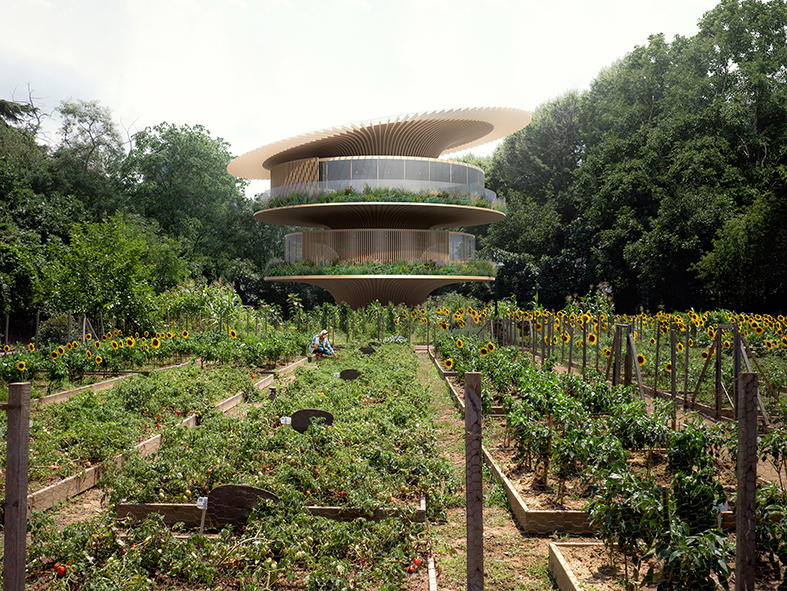The hallmark of modernism in the 20th century was the idea that “form follows function.” Now, architect Koichi Takada is challenging designers to create a new architectural movement focused on environmental responsibility. He believes that in this new style, “form follows nature.” His Sunflower House responds to this call as a single-family home designed to create its own energy. It was commissioned by Bloomberg Green in order to meet the standards of a greener future for Europe. The home is inspired by the sunflowers in Umbria in Central Italy—not only in aesthetic but also in function.
Takada explains that “designers and architects talk about drawing inspiration from nature in an aesthetic sense but we must go much deeper than that.” This visual inspiration is one form of biomimicry, where humans design buildings or spaces to look like something found in nature. Takada believes that we must not use biomimicry to superficially reproduce nature just for its beauty, but rather we must reproduce its environmental benefits. “It’s not just about making a building look natural, it’s about creating positive environmental change in the homes we live in, the neighborhoods we work and play in, and ultimately the planet we are privileged to inhabit.”
For the completed article, please visit The Modern Met.




